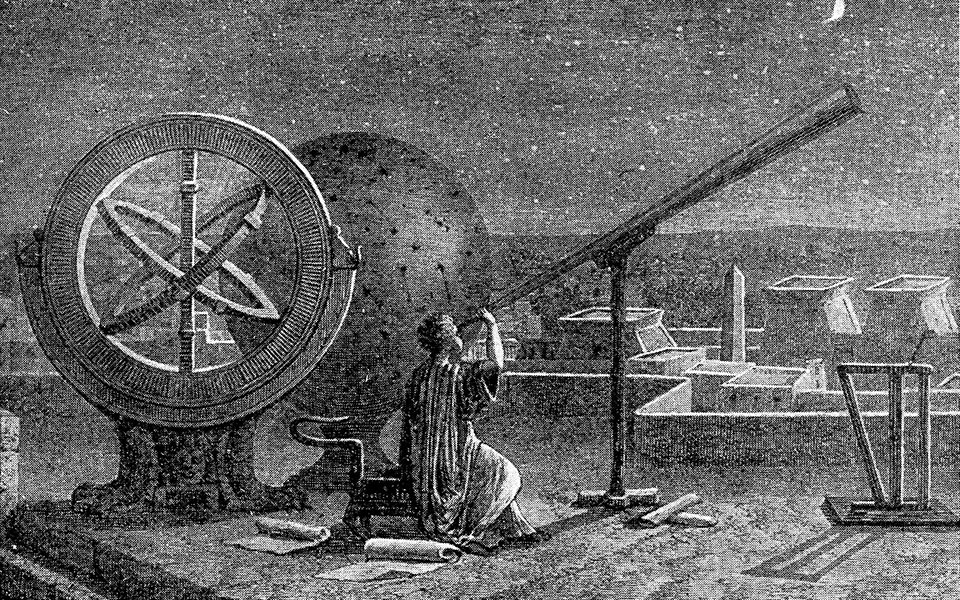The space above planet Mars has been getting busy of late. Two national space agencies, those of China and the UAE, have sent rockets in the past year, each containing sophisticated instruments to study the planet’s atmosphere and weather patterns.
They join other orbiters from NASA, the European Space Agency (ESA) and India’s own Mars Orbiter Mission. As of 2021, there are as many as 11 functional spacecraft on or above Mars: eight in orbit, three on the surface.
While it is only in recent decades that humanity has acquired the technical means to actually reach Mars, our fascination with the red planet can be traced back thousands of years to hallowed antiquity, when ancient Babylonian, Assyrian, and Egyptian stargazers made complex observations of Mars and other planets visible to the naked eye.
Subsequently, the ancient Greeks built on the work of their predecessors and developed an even deeper understanding of the cosmos, its structure and origins, by weaving together a rich tapestry of astronomy (largely based on mathematics), philosophy, mythology, and symbolism. Their millennia-old contributions laid the groundwork for much of our understanding of the solar system, setting us on the path to the modern-day exploration of Mars.
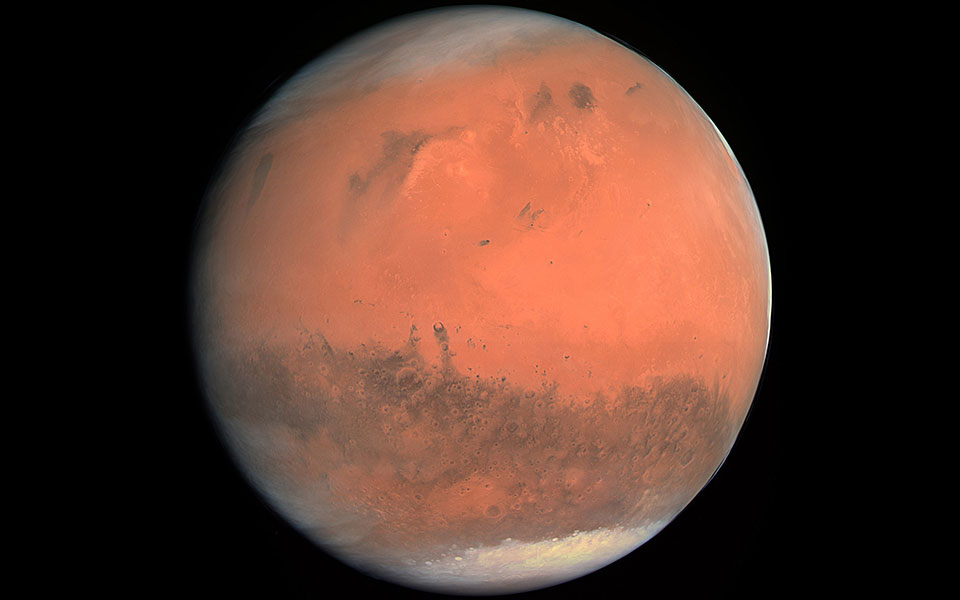
© ESA & MPS for OSIRIS Team
The development of ancient Greek astronomy
Western astronomy has its origins in ancient Mesopotamia (“the land between the rivers” – the Tigris and Euphrates), where Babylonian mathematicians and astronomers carefully observed and recorded celestial objects and astronomical events such as lunar and solar eclipses, and associated the red glow of Mars in the night sky with Nergal, god of war and strife.
They developed advanced arithmetical techniques to calculate the timing of these phenomena for rituals and religious purposes, similar to the ancient Maya in Central America. The ancient Britons and Polynesians also developed systems to track the movements of the Sun and the moon.
The ancient Egyptians were the first to notice that the stars were fixed and the Sun moved relative to the stars. They plotted the approximate positions of Mercury, Mars, Venus, Jupiter and Saturn, all visible to the naked eye, and noted that Mars followed an irregular loop in the night sky. As such, they referred to it as Sekded-ef em khetkhet (meaning “One who travels backward”), or Har Decher – simply, the “Red One”.
Influenced by the earlier Babylonian and Egyptian astronomers, the ancient Greeks developed the emerging field of astronomy as a sub-branch of mathematics. Greek stargazers made a significant number of increasingly accurate observations and developed core theories that form the basis of our own understanding of astronomy, including the earliest known heliocentric theory of the solar system.

© Library of Congress Vatican Exhibit
Aristarchus of Samos (Ἀρίσταρχος ὁ Σάμιος, c. 310–230 BC) was the first to place the Sun (or “central fire”) at the center of the known universe, with the Earth and other known planets revolving around it.
Indeed, the word “planet” comes from the Greek planetes (πλανήτης), meaning “wanderers”. Aristarchus also attempted to calculate the sizes and distances of the moon and the Sun, and speculated, correctly, that stars were other suns.
The first known astronomical calendar is the Antikythera Mechanism, discovered in a shipwreck off the Greek island of Antikythera by sponge divers in 1900. Generally referred to as the oldest analogue computer, its complex construction was based on astronomy and mathematics developed by the Hellenistic astronomers of the third and second centuries BC, including Archimedes of Syracuse (Ἀρχιμήδης, c. 287–212 BC).
The mechanism is remarkable not only for its complexity and precise engineering, including the miniaturization of at least 30 gears, but as a device to accurately calculate the mean positions of the Sun, moon, and five known planets, including Mars.
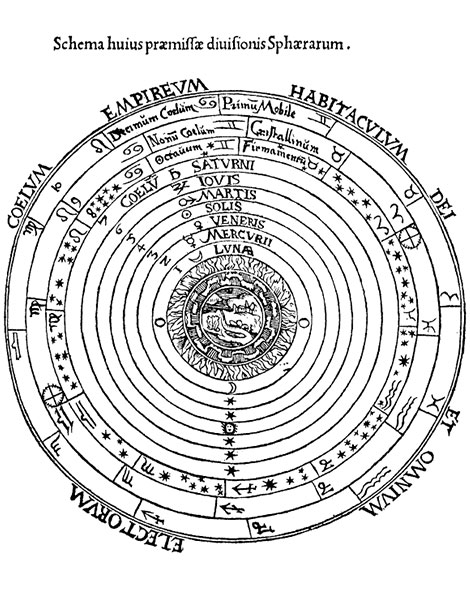
© Edward Grant, "Celestial Orbs in the Latin Middle Ages", Isis, Vol. 78, No. 2. (Jun., 1987), pp. 152-173
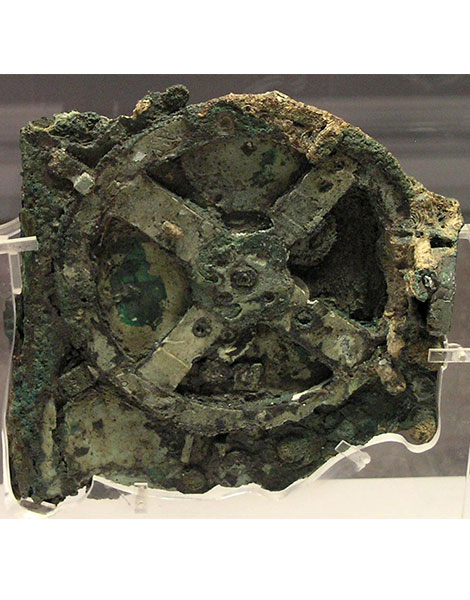
© National Archaeological Museum, Athens, No. 15987
What the ancient Greeks knew about Mars
The five known planets in ancient Greece – Mercury, Venus, Mars, Jupiter and Saturn – are often referred to as the “classical” or “naked-eye planets”. Early Greek astronomers and philosophers, including the shadowy Pythagoras (c. 570–495 BC), correctly observed the irregular movements of the planets in relation to the fixed stars, and were among the first to identify the morning star and the evening star, referred to by Homer, as being the same celestial object of Venus.
Hipparchus of Nicaea (Ἵππαρχος, c. 190–120 BC) erected an early observatory on the island of Rhodes around 150 BC, and set about compiling a star catalogue with approximately 850 entries. He calculated the celestial coordinates for each star using the first known trigonometric table, and developed and improved several astronomical instruments, including the astrolabe (ἀστρολάβος) – an analogue calculator used to measure the angles of celestial objects relative to the Earth.
Hipparchus’ contribution to the early study of the solar system is commemorated in the form of a 93 km-wide impact crater on the surface of Mars, named after him in 1973. An even bigger crater on the moon, 150 km-wide, was also named after the ancient Greek astronomer.
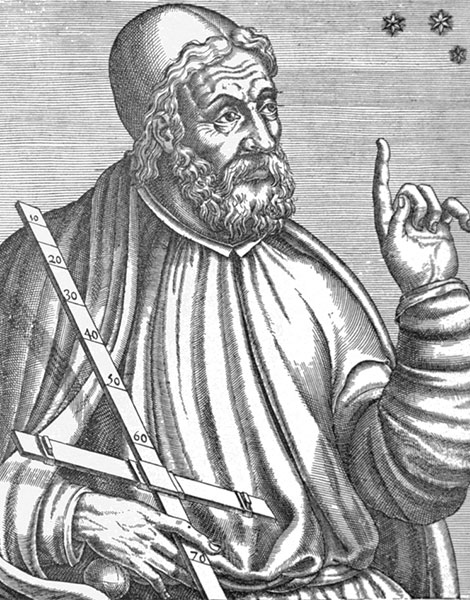
© Popular Science Monthly, Volume 78, April 1911, p. 316

Arguably the most important Greek astronomer was Claudius Ptolemy, or Ptolemaeus (Κλαύδιος Πτολεμαῖος, c. 100–170 AD), an Alexandrian Greek who, building on the data collected by Hipparchus, devised the much vaunted “Planetary System”, a geometric representation of the solar system that could predict the positions of the naked-eye planets for any desired date and time. Most importantly, the system placed the five planets in order, closest to Earth to furthest away.
Ptolemy was the first astronomer to accurately describe the precise location of Mars, and developed a mathematical solution (epicycle) to account for the complicated retrograde movement of the planet relative to Earth – the irregular loop previously observed by the Egyptians. Ptolemy’s calculations formed the basis for subsequent cosmological models that endured until the time of Copernicus, nearly 14 centuries later.
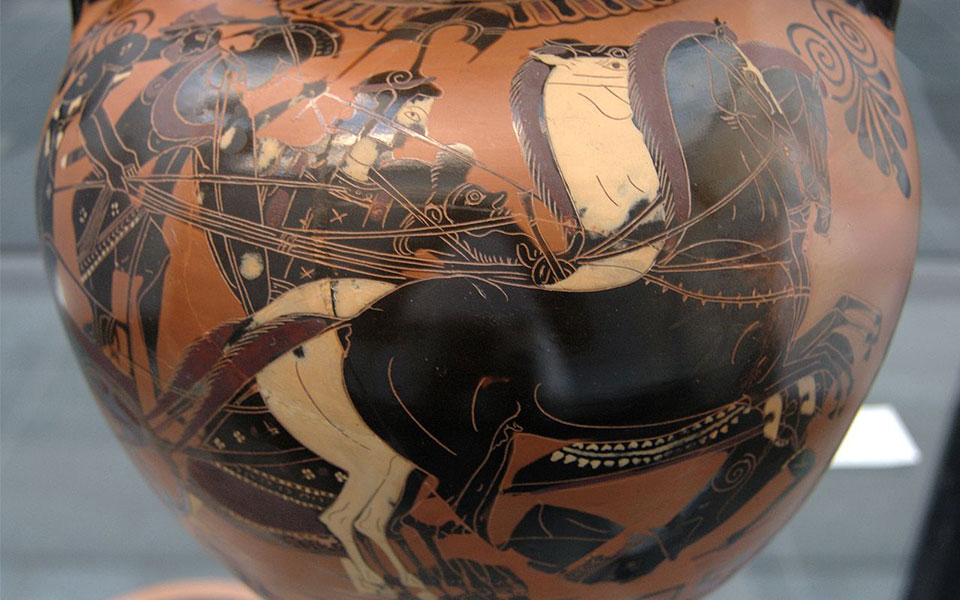
Mars and the personification of the god, Ares
The astronomical and astrological symbol of the planet Mars, a circle with a small arrow pointing to the upper right, is a stylized representation of a shield and spear used by Ares (Ἄρης), the Greek god of war. It is also the gender symbol for male and the alchemical symbol of iron.
Ares was one of the Twelve Olympians, the son of Zeus and Hera. He was mostly reviled by his fellow gods, associating him with bloodlust and the more violent and brutal aspects of war. In Homer’s Iliad, he was also depicted as a coward, running away to Mount Olympus when challenged by the Greek hero, Diomedes, to single combat in the Trojan War. His sister, Athena, by contrast, represented the more thoughtful and strategic aspects of war.
Mars’ twin moons (or satellites), first discovered by American astronomer Asaph Hall III in 1877, were named Deimos (“terror” or “dread”) and Phobos (meaning “panic” or “fear”), the twin sons of Ares and Aphrodite. In the Iliad, they both accompany their father into battle, sowing terror and confusion in the midst of battle.
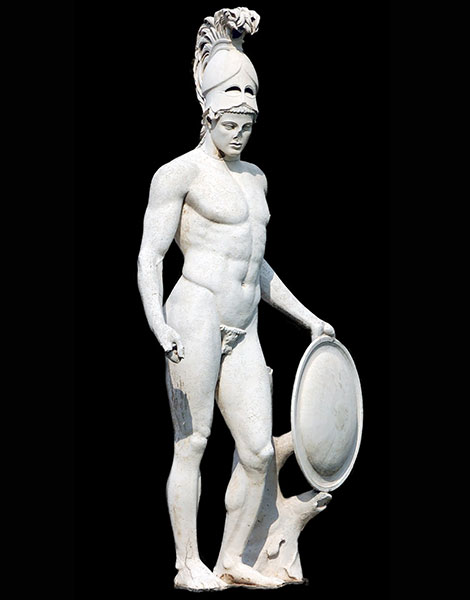
© Jastrow derivative work: Eric Machmer
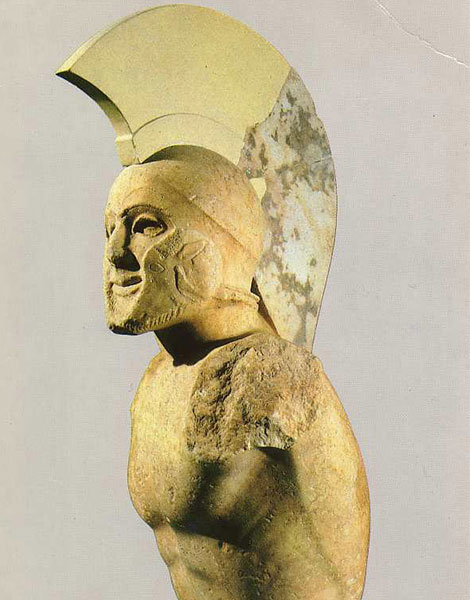
© Archaeological Museum of Sparta, Greece
The ancient Greeks themselves built precious few temples or places of worship in Ares’ honour, and the existence of cults were extremely rare. Only the warlike city-state of Sparta bucked the trend, indicative of the cultural divisions that existed between them and the rest of Greece.
The Spartans viewed him as the model soldier, brave, resilient, and strong. They called him Ares Enyalios (“the warlike”), and in the famed agoge, where Spartan youths were sent to train in the arts of war from the age of 7, each company would sacrifice a puppy prior to ritual combat.
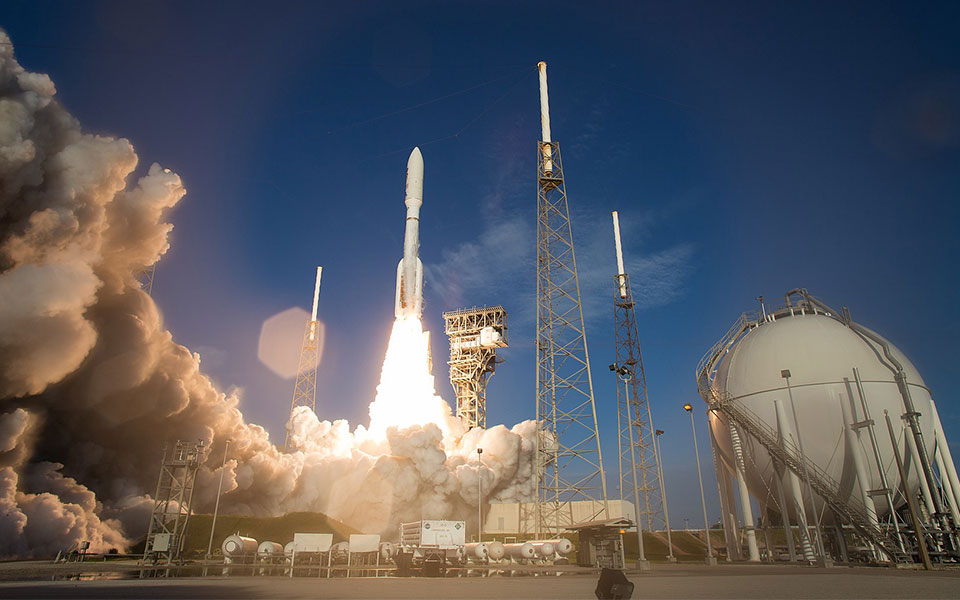
© NASA/JPL-Caltech (Joel Kowsky)
How the ancient Greeks have inspired modern-day Mars exploration
Over the course of nearly a millennia, ancient Greek astronomers developed increasingly complex geometric theories in an effort to understand the movement of the planets, placing them more precisely in time and space.
Their calculations enabled a greater understanding of time and time-keeping, key to all civic and religious calendars in ancient Greece. Lunar and solar/seasonal cycles, for example, were vital for agriculture and navigation, and bespoke mechanical devices, like the Antikythera Mechanism, could be used to predict astronomical positions.
As spacecraft amass in orbit around Mars, and sophisticated autonomous landers explore its rocky, barren surface, it is important to remember the collective achievement of the ancient astronomers who first inspired humankind to reach beyond the limits of our own planet.
The reason for the sharp increase in activity on and above Mars is down to fundamental logistics, calculations that were first attempted by ancient astronomers. Once every 26 months, Earth and Mars are aligned, closest in distance (a mere 56 million km – as opposed to 400 million km at its furthest distance) thereby minimising the amount of required fuel.
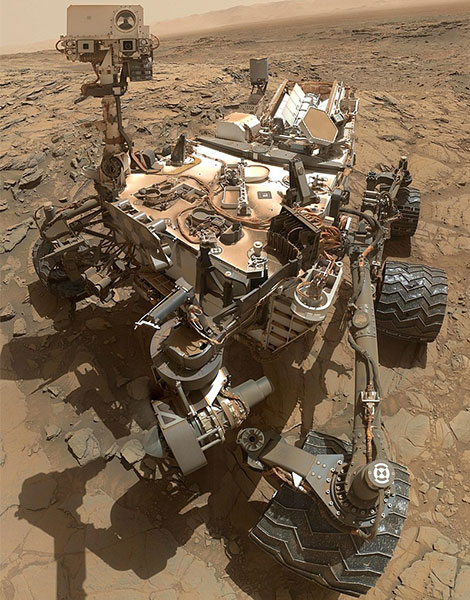
© NASA - http://photojournal.jpl.nasa.gov/catalog/PIA19920

© NASA - https://www.nasa.gov/specials/lego/
Hipparchus, Ptolemy et al. paved the way for our understanding of Mars’ orbit around the Sun, and its relative position to Earth, laying the foundations for our understanding of the timing and duration of this crucially important launch window.
If successful, Mars exploration, which had its roots in ancient astronomy, will enable humans to land on the planet in the not-too-distant future. At which point, humanity, for the first time in our history, will become a multi-planetary species.

